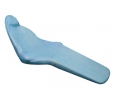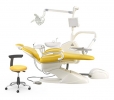No dentist likes to lose patients, particularly when those patients take their business to competing nearby practices. Patient departures cannot be entirely prevented, however, there are steps dentists can take to steer their former patients back to their practice and prevent other patients from leaving in the first place.
Ask departing patients for feedback
If a patient calls your practice to ask for medical records or otherwise inform you of his or her departure, instruct your staff to ask whether there’s anything the practice can do to encourage the patient to stay.
If the patient is not open to staying, ask specifically why he or she is leaving. Perhaps the person found the front office staff to be rude, or he or she is dissatisfied with the long wait on hold when scheduling appointments. Feedback like this can help you improve your dental practice.
In some cases, patients will not let you know they’re leaving, they will simply stop booking appointments and stop responding to outreach efforts. The most effective way to receive feedback from these patients is to send them a survey to ask about their departure.
Sending the survey via email is the most effective way to reach former patients. Online tools such as Google Forms
and SurveyMonkey make it easy to create professional-looking surveys that former patients can complete in minutes. If you do not have patient email addresses in your database, you can send surveys through the mail.
To encourage more participation, keep your surveys short and to-the-point. First, ask patients to select their reasons for leaving from a list of possibilities. These might include:
● I have moved out of the area or have had other life changes that prevent me from returning to this practice.
● My insurance has changed and this practice does not accept my new provider.
● I experienced logistical challenges, such as difficulty parking, that made me not want to return to this practice.
● I had difficulty reaching the practice by phone to schedule an appointment.
● The service I received from the front office staff was not up to my standards.
● The treatment I received from the health-care provider was not up to my standards.
● Other (please explain).
Then ask patients to provide more detail as to why they left. The answers you receive are your most valuable feedback.
Make changes based on patient feedback
Once you know why patients left, determine whether you can make the changes necessary to draw them back. If you receive a lot of complaints about trouble getting a staff member on the phone to book appointments, you could add online scheduling to your practice website. Or if patients indicate that finding parking is difficult, you could lease a nearby lot or offer a valet service.
You won’t be able to resolve every complaint about your practice, but you can prioritize projects in order to attract the greatest number of former patients.
Notify lost patients about practice changes
If you make changes to your practice based on patient feedback, reach out to let former patients know about the changes. To increase the likelihood they’ll return, offer them a free consultation or a small discount on products or services.
Be sure to also share changes with current patients. Doing this keeps them informed and demonstrates that you take patient satisfaction seriously.
Don’t assume dormant patients have departed
It would be a mistake to assume that patients you have not seen in some time have left your practice entirely. Many patients need several reminders before they are compelled to schedule appointments.
The easiest way to keep in touch with dormant and other patients is to send appointment reminders by email, text message, or postcard. You can appoint one staff person to handle appointment reminders, or you can use software tools such as PatientPop that automate the process. You can also keep in touch with patients by sharing educational content such as dental health tips on social media or via an e-newsletter.



